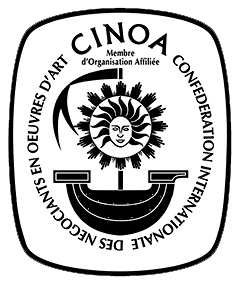Albert Jansz. Vinckenbrinck, the Holy Family
Global shipping available
- Maker
- Albert Jansz. Vinckenbrinck
- Origin
- Amsterdam
- Period
- C. 1645-1664
- Material
- Boxwood
- Diameter
- 10 cm
- Literature
D. Franken, ‘Albert Jansz Vinckenbrinck’, Oud-Holland, V, (1887), pp. 72-92
Th. Lunsingh Scheurleer, ‘Nieuws over den Amsterdamschen beeldhouwer Albert Vinckenbrinck’, Oudheidkundig Jaarboek. Bulletin van den Nederlandschen Oudheidkundigen Bond 13 (1946), pp. 29-33
‘Sculpture and works of art’, J. Paul Getty Museum Journal volume 18 (1990), pp. 196, 197.
W. Halsema-Kubes, ‘Kleinplastiek van Albert Jansz. Vinckenbrinck’, Bulletin van het Rijksmuseum, XXXIX, 4, (1991), pp. 414-425
M. Eisma, In beeld gebracht. Beeldhouwkunst uit de collectie van het Amsterdams Historisch Museum, Zwolle, 1995, pp. 209-210, nr. 139, pic. XI
M. Eisma, 'Albert Jansz Vinckenbrinck, ontwerper en beeldsnijder', Maandblad Amstelodamum 83 (1996), pp. 33-43
M.J. Bok, 'De Utrechtse verwanten van de beeldsnijder Albert Janszn Vinckenbrinck', Maandblad Amstelodamum 83 (1996), pp. 167-172
J.A.C. Dudok van Heel, 'De werkplaatsen van de beeldsnijder Albert Janszn Vinckenbrinck', Maandblad Amstelodamum 83 (1996), pp. 173-177
Questions about this object?
Please use one of the contact options below:
Description
This exceptionally and finely carved palmwood plaque was made by the Amsterdam woodcarver Albert Jansz. Vinckenbrinck (1605 - 1664). The plaque depicts the Holy Family in a sloping landscape. In the background Joseph and Mary can be seen, in the foreground, Christ as the Lamb of God with two angels and two cherubim are depicted. Joseph is portrayed as a carpenter, holding a hammer in his right hand, while holding the nail with his left hand. Maria is seated and doing handiwork with a woven basket next to her. Behind Joseph and Mary, a house can be seen, which, in combination with the activities of Joseph and Mary, gives the whole an intimate and personal atmosphere. The kneeling angels in the foreground give the Lamb water to drink. The left angel has a radiating aureole around his head and looks up in adoration, the right angel has a circular halo behind his head and a cross in his right hand as a sign for Christ's passion and resurrection. In front of the Lamb lies a bunch of grapes in the grass, a possible reference to the sacrament wine and the coming suffering of Christ. The two cherubim in the sky are holding a wreath of flowers to crown the Lamb. This plaque shows the refined work of Vinckenbrinck, who, like no other, was able to apply detail and expression to the hard palm wood. In the seventeenth century, plaques like this were framed or incorporated into, for example, the panels of a cabinet.
Albert Jansz. Vinckenbrinck was baptized on April 3th 1605 in the Nieuwe Kerk in Amsterdam. Years later he would manufacture the exceptionally beautiful and exuberant 13-meter high hexagonal pulpit and immense sounding board with a Gothic tower, where his knowledge and skill of woodcarving, and in particular of perspective depth effects, were fully expressed. Jan Albertsz. Vinckenbrinck, Albert's father, came from Esens, East Frisian, and settled in Amsterdam as a box maker. Albert Jansz. followed in the footsteps of his father, and shared a workshop with him for quite some time. In 1629 Albert Jansz. Vinckenbrinck bought the furniture and tools of the deceased sculptor Cornelis van den Bloocke at an auction and he appealed to "beeltsnyder". He evolved into a particularly virtuoso woodcarver, specialized in cutting palm wood and became a well-known name in the Dutch Renaissance. The small oeuvre of works of art that has survived time is of great quality and eloquence. In addition to large works for architectural use, such as the pulpit in the Nieuwe Kerk and various decorative domestic elements such as fireplaces, gates, doors and mouldings, Vinckenbrinck also produced small wood carvings. A few carved portraits, plaques, sculptures and memento mori skulls are known from him. A frequently recurring personal theme in his work is the life and suffering of the biblical figure Job. After 130 years of research, about fifteen signed works by Vinckenbrinck in palm wood are now known. Several of these works are mentioned in the inventory drawn up at the time of Vinckenbrinck's death, and could therefore have been carved for personal use or as an example for clients.








